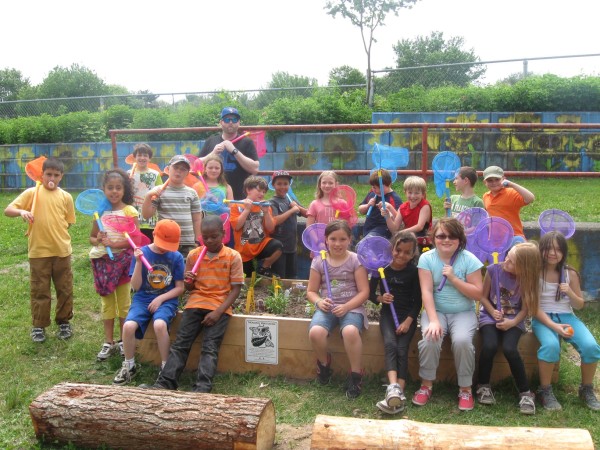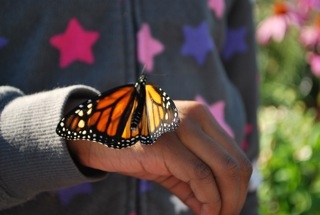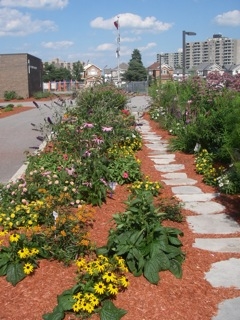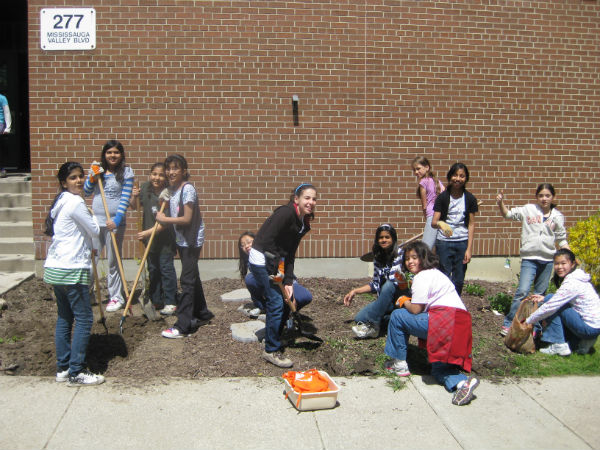Successful School Butterfly Gardens
This is part of a blog series celebrating WWF’s Monarch Butterfly Week, May 5-9.
From 2010–13, WWF and Loblaw Companies Ltd. awarded $600,000 in Green CommUnity Grants to schools across Canada. Of the over 200 schools that received funding, seven created monarch butterfly waystations — places of refuge for monarchs, full of milkweed and nectar-producing flowers.
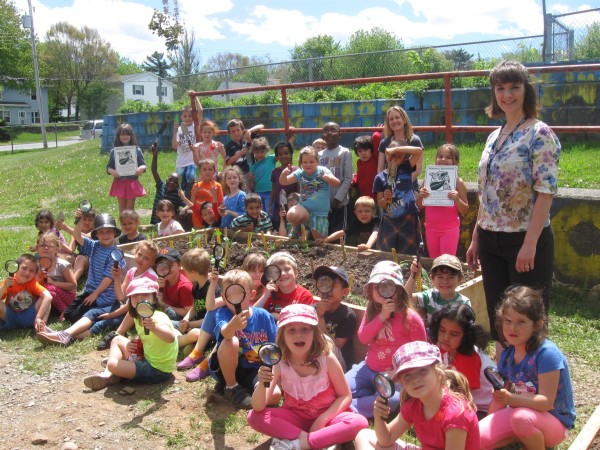
In Halifax, NS, École Burton Ettinger School rallied support from students, teachers, parents, local business owners and community volunteers to create a large outdoor classroom with a monarch butterfly program, native trees and shrubs and vegetable beds. A bog attracts insects and frogs and nesting boxes bring in the birds. With little green space nearby, the school’s project does much to enhance the area’s biodiversity and provides a rich learning environment for students at the same time.
In Ottawa, ON, École élémentaire catholique Marius-Barbeau welcomed ten monarch caterpillars and four monarch pupa into classrooms last fall. The monarch waystation project was led by Grade 1 teacher Katherine Hayashi, a member of the Monarch Teacher Network. Students and teachers released two adult butterflies into the garden last September, and hope they made it to Mexico safely this past winter.
In Yorkton, SK, upper elementary students and teachers at Yorkdale Central School created the “Yorkdale Royal Gardens,” full of bird and butterfly feeders and plants to attract wildlife to the garden. Grade 5 teacher Audrey Hrycak planned to have students conduct field studies to observe, record and analyze the components of their garden’s ecosystem, so that students could learn how it functions and recreate similar butterfly habitats in their backyards.
If you’re thinking about starting your own school butterfly garden this spring, here are some words of advice from our Green CommUnity School Grant winners:
- Enlist the help of other people. The principal, custodian and parent council are key to your success. Get them excited and on board as early as possible.
- You’ll need two types of plants. Butterflies visit gardens in search of nectar to eat, so you need to have nectar-producing flowers in your garden. But you also need to provide host plants so that butterflies can lay their eggs and caterpillars can eat. For monarchs, the host plant is milkweed!
- Locate your water source before you dig. It will be difficult to keep your plants alive during the summer or during periods of drought without easy access to water. (Filling up a watering can inside the school is not a great long-term solution.) If there’s no faucet nearby (and even if there is) consider investing in a rain barrel and always mulch to keep your soil from drying out too quickly.
- Flat stones and shallow puddles. Butterflies will sometimes gather together for a drink if there’s a shallow source of water (called “puddling”) or bask in the Sun if there’s a flat rock on which to perch.
- Do not use pesticides in or near the garden. Most garden pesticides are toxic to butterflies. Introduce predatory insects (like ladybugs) if you have a pest problem.
We’re wrapping the Green CommUnity School Grant program up at the end of this school year (so check the blog this June for a roundup of our favourite stories and photos!), but WWF’s Schools for a Living Planet program continues to offer many benefits to teachers and schools. Sign up for the e-newsletter to stay in the loop about contests, newly released classroom resources and special opportunities for schools.
WWF’s Schools for a Living Planet connects educators and students of all ages to WWF’s conservation work. Join the S4LP community and learn how you can inspire your classrooms and classmates to build a future in which humans live in harmony with nature.

